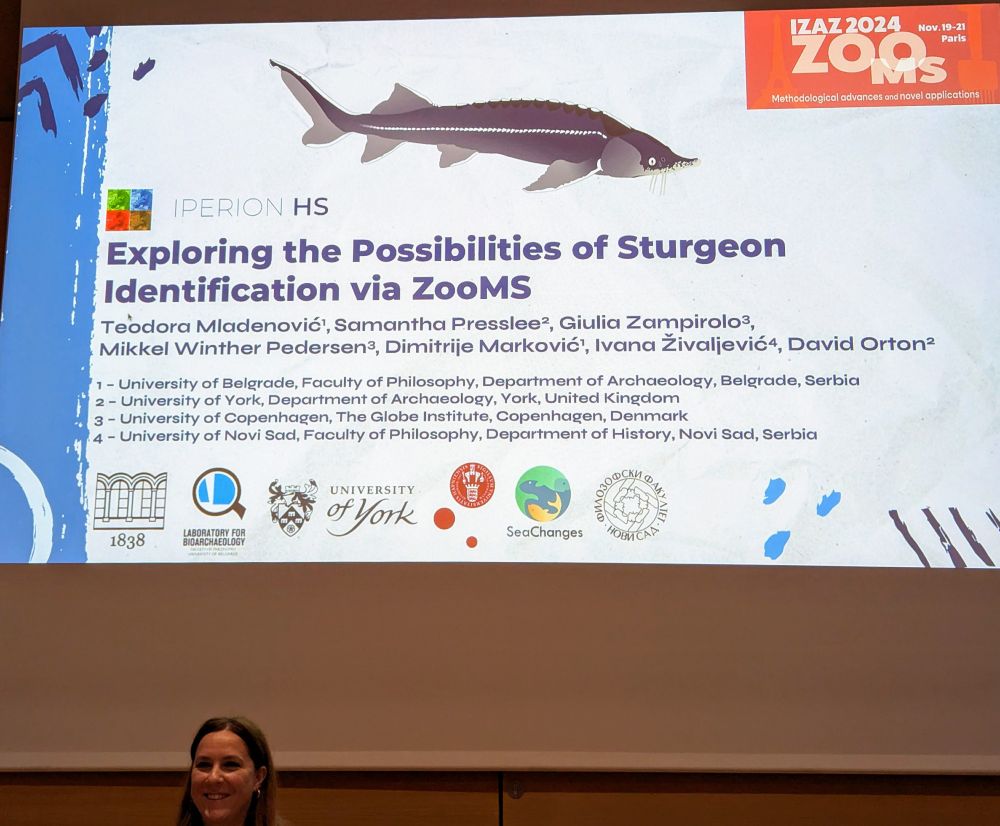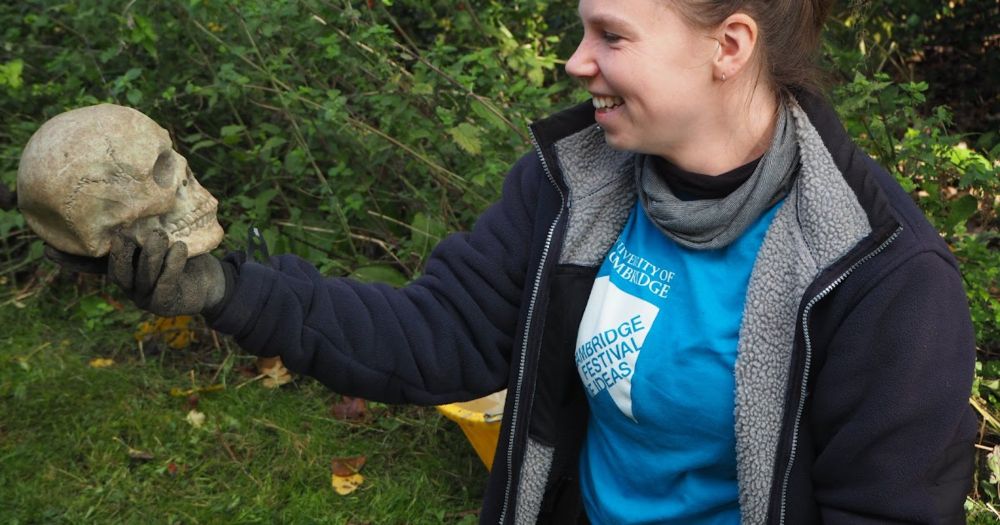Jobs - The University of York
We're looking for a post-doc in mathematical modelling to join us on the RATTUS project here in York! Come and model rat populations in networks of historical settlements, working with @anaspene.bsky.social and colleagues in archaeology, biology, and history. jobs.york.ac.uk/vacancy/rese...
12.05.2025 06:02 — 👍 6 🔁 4 💬 0 📌 1
Jobs - The University of York
If you like maths, space, time, data, rats and medieval Europe, this postdoc is for you! Apply to join me and the RATTUS team in York for two years of interdisciplinary modelling fun: jobs.york.ac.uk/vacancy/rese...
08.05.2025 15:53 — 👍 7 🔁 6 💬 0 📌 0
Very cool! We're working on refining the timing of rat decline/extirpation and also controlling for biases in research effort - perhaps we should talk?
03.12.2024 12:49 — 👍 2 🔁 0 💬 1 📌 0

Contextualising Edix Hill: First-Pandemic Plague and Britain*
Abstract:. The 2019 discovery of Yersinia pestis ancient DNA at Edix Hill in Cambridgeshire unquestionably confirms that plague was present in sixth-centur
For those of you who (wisely) haven’t been on Twitter lately and may not know, I recently had an article come out in the EHR on early medieval British plague and its broader historiographical implications. Just message me if you don’t have access and need a pdf!
academic.oup.com/ehr/advance-...
09.11.2024 23:13 — 👍 116 🔁 28 💬 8 📌 1

A presenter (Rachel Winter) stands at the left of the frame in a black top, speaking into a microphone. She is showing an acknowledgements slide that lists numerous collaborators and displays logos of participating institutions including the University of Groningen, York, and Reading.
🌅 Day 3 of #IZAZ2024 kicks off with Rachel Winter discussing the use of palaeoproteomics for understanding marine historical ecology. Your correspondent battled Paris RER delays and only made it for the final slide! 🐟 #archaeology #ZooMS Luckily she is heading to Copenhagen to work with in 2025!
21.11.2024 08:34 — 👍 13 🔁 2 💬 1 📌 0

A presentation slide showing the title 'Exploring the Possibilities of Sturgeon Identification via ZooMS' with an illustration of a sturgeon at the top. The slide lists authors from multiple institutions including the Universities of Belgrade, York, Copenhagen, and Novi Sad. The IPERION HS logo and institutional logos are displayed at the bottom. In the top right corner is the IZAZ 2024 conference logo. The presenter, smiling, is visible at the bottom of the frame
🐟 Now at #IZAZ2024: Teodora Mladenović presents groundbreaking work on sturgeon identification using #ZooMS. These endangered ancient fish have been crucial in European history, but their archaeological remains are notoriously hard to identify to species level.
21.11.2024 08:40 — 👍 10 🔁 5 💬 1 📌 0

A presentation title slide from the Max Planck Institute of Geoanthropology showing 'Fish in the Oasis: Zooarchaeological and ZooMS insights into fish exploitation along the Ancient Silk Road in Central Asia' by Carli Peters, Noel Amano, and Robert Spengler. The presenter, Carli Peters, is visible speaking at the bottom of the frame.
🐟 Fascinating talk coming up at #IZAZ2024 by Carli Peters et al. on fish exploitation along the Ancient Silk Road! Looking forward to seeing this research when it's published. #archaeology #ZooMS.
21.11.2024 08:55 — 👍 11 🔁 1 💬 1 📌 0

A presentation slide showing a series of labeled baleen whale artifacts (in yellow/gold coloring) alongside a map of Europe with coastal sites marked in red. The artifacts appear to be worked whale bone or baleen strips, each with a 'DAG' catalog number. The presenter, in a burgundy shirt, is gesturing while speaking.
A fascinating large piece of archaeological detective work: using ZooMS to identify whale species from worked artifacts across European coastal sites. Each specimen helps reconstruct historical whale populations and human-whale interactions! 🐋 #archaeology #IZAZ2024
21.11.2024 10:37 — 👍 7 🔁 1 💬 0 📌 0

Sam Presslee speaks into a microphone while presenting a slide titled "Micromammals in the ZooMS DB". The slide shows that there are currently 33 micromammal species in their database from Africa, the Americas, and Europe. It displays photos and scientific names of 12 new species being added, including the Turkestan rat, Orkney vole, field vole, pygmy shrew, common shrew, Eurasian hedgehog, guinea pig, wood mouse, yellow-necked mouse, edible dormouse, hazel dormouse, grey squirrel, and red squirrel. The slide also lists additional species they hope to add in the future, including the Indian gerbil, short-tailed bandicoot rat, European hamster, and Southern water vole.
If you have any bones for @archaeorattus.bsky.social to build their database, let them know!
20.11.2024 09:04 — 👍 8 🔁 2 💬 0 📌 0

two laptops open on a train table, with some coffee cups
Sam & David are heading to the ‘Integrating ZooMS and Zooarchaeology’ workshop in Paris, to talk about how ZooMS collagen fingerprinting fits into our workflow for studying tiny rat bones - alongside zooarchaeology, radiocarbon, aDNA, and isotopes.
Here we are doing our homework on the train...
19.11.2024 13:38 — 👍 5 🔁 1 💬 0 📌 0
SEACHANGE is now here! @seachange-erc.bsky.social
Very cool ERC-Synergy project looking at human impact on marine environments, via archaeological & historical datasets on the one hand and offshore coring & palaeoecology on the other.
19.11.2024 09:47 — 👍 3 🔁 0 💬 0 📌 0

Meet the team - Alice
Hi all! I am Alice and I am a Postdoctoral Research Associate on the RATTUS project. I am working with Michelle Alexander and Eric Guiry to ...
More new followers- hello! As an introduction, I am currently a PDRA on the RATTUS project (@archaeorattus.bsky.social), applying isotope analysis to archaeological rats. If you want to find out more, heres an intro post I wrote for the RATTUS blog: the-rattus-project.blogspot.com/2024/09/meet... 🏺
13.11.2024 14:12 — 👍 16 🔁 7 💬 0 📌 1
Zooarchaeology, ZooMS, radiocarbon, aDNA, isotopes and historical research, all capped off with some population modelling. It's all very exciting. Stay tuned for updates!
15.11.2024 17:04 — 👍 1 🔁 0 💬 0 📌 0
What you *can* expect are updates from the RATTUS team on what is (IMO anyway) some really very cool research. Piecing together scattered records of tiny, seemingly insignificant bones and using them to tell stories about the broad sweep of human history across a continent and two millennia.
15.11.2024 17:00 — 👍 2 🔁 0 💬 1 📌 0
So from now on this is a Proper Project Account, rather than my own super-niche brand of personal rat/archaeology ramblings that some of you might remember from Twitter. That's probably for the best.
15.11.2024 16:54 — 👍 1 🔁 0 💬 1 📌 0

RATTUS Project
Rats and the Archaeology of Trade, Urbanism, and Disease in Past European Societies
2023 – 2027
So here we are. A lot's changed since I (David) stepped back from Twitter a few years ago. For a start my rat work has grown into a major research project, RATTUS, thanks to the ERC & UKRI - see sites.google.com/york.ac.uk/rattus/
15.11.2024 16:51 — 👍 46 🔁 12 💬 1 📌 0
Hello world.
19.10.2024 19:10 — 👍 17 🔁 2 💬 2 📌 0
I like ponies🐎, books📚, archaeology🏺. Mediocre rider, unfocused reader and currently studying for MA Archaeology at University of Reading.
🇬🇧
Also @adventuresintheoutback on Insta and @woman_much_missed on Insta(Bookstagram)
Not on X. No.
NE-aar is obsessed with amino acid racemization analysis for Quaternary geochronology, earth science, archaeology & to understand protein breakdown. Based at Uni of York; posts are own views.
Archaeology student in Cologne ☀️
Associate Professor at Aix Marseille University (CEREGE)
Archaeological science | Radiocarbon dating | Biogeochemistry
#Archaeology #Prehistory #Radiocarbondating
Die Vor- und Frühgeschichtliche Archäologie ist eine Abteilung des IAK an der Philosophischen Fakultät der Universität Bonn.
VFG Website: https://www.iak.uni-bonn.de/de/institut/abteilungen/vor-und-fruehgeschichtliche-archaeologie
Heritage, Archaeologist, solidarity, she/her - hoping for more kindness, often anxious and sharp. Professionally garrulous. Living in Cardiff. Ageless, so no DMs
Quantitative ecology (especially seeds, and all who eat them), game-based/playful learning, ducks, cats, flowers, fantasy fiction and storytelling. Views my own.
MSc Zooarchaeology | BA Archaeology | York 🏴 | Sydney 🇦🇺
Neolithic archaeologist | outdoor fanatic | family person | I co-direct @korcaneolithicproject and @archaeodaubworlds
Our Bluesky account - University College Dublin,
Ireland - posts by Aidan O'Sullivan and Conor McDermott
Under the influence of tiny humans. Back burner projects include a PhD in archaeology at UCL (palaeoecology & palaeoclimate reconstruction integrating zooarch, ZooMS, & multi-isotope analysis), dancing, fiction writing, cocktail making, and cat servitude.
Ad Astra PhD researcher in Archaeo 🪰 entomology
UCD Dublin ☘️☘️
She/Her
PhD research: Health and hygiene in early medieval Ireland
Website coming soon!
Postdoctoral researcher at the University of Wisconsin studying South American genetic history 🇨🇴🇪🇸
Into: 🐱🤸🏾♀️🧘🏾🥑🍺🎪
Member of the SMBE IDEA Taskforce 🌿
https://t.co/S7RLrxWE20
PhD student at the Institute of Genomics, University of Tartu 🇪🇪
indigenous populations⛵️ • population genetics🧬 • evolution🌳 • nature🍃 • board games🎲 • movies🎥 • guinea pigs🐹 • mother of 3👧🏼👦🏼🧒🏼
A centre of excellence in bioarchaeology.
Department of Archaeology, University of York
Archaeologist | Osteologist | Historian | British/Dutch | Assistant Professor
@inthesamesea.bsky.social @rm-project.bsky.social | 1800s Eastern Caribbean
This it the official Bluesky account for the archaeology department at the University of Aberdeen. Follow us to see what we are up to (or digging down into)
The School for Advanced Research.
Create. Connect. Understand.
SAR: The only residential research institution supporting scholars & artists at the intersection of humanities, social sciences, & Native arts.
Anthropology I Archaeology I Humanities I Art
Interested in ancient proteins & Human Evolution | @Welkergroup.bsky.social | Globe Institute, University of Copenhagen | 🦷🦴💀
Doctoral Researcher in Archaeological Sciences at @univie.ac.at -
Department of Evolutionary Anthropology. Exploring Late Neanderthal sites in the Palaeolithic - Radiocarbon dating, Paleoproteomics, Stable Isotopes. Yorkshire lass in Vienna.









